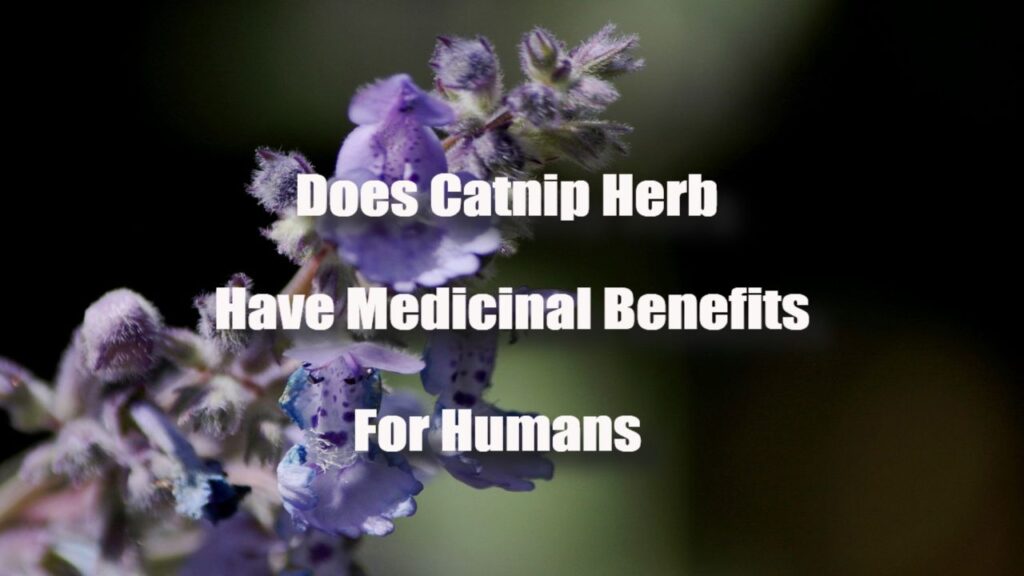Does Catnip Herb Have Medicinal Benefits For Humans
Does Catnip Herb Have Medicinal Benefits For Humans: Catnip belongs to the mint family and has been used medicinally for centuries.
While it is most commonly associated with its effects on cats, it has also been used in humans as a mild sedative, a treatment for colic and gas, a fever reducer, and a remedy for headaches and insomnia.
Some research suggests that compounds in catnip, particularly nepetalactone, may have anti-inflammatory, antimicrobial, and antioxidant properties.
However, most studies on catnip have been in animals or test tubes; hence, additional study is required to comprehend its therapeutic benefits in humans fully.
It’s important to note that catnip herb is considered safe for most people to use in moderate amounts. Still, high doses or long-term use may cause side effects such as dizziness, vomiting, or even hallucinations.
Pregnant or breastfeeding women should avoid using catnip, and people with a history of allergies to plants in the mint family should also use caution.
Suppose you are interested in using catnip for medicinal purposes.
How To Use And Prepare Catnip For Medicinal Purposes
There are several ways to use and prepare catnip for medicinal purposes, including:
To make catnip tea:
A cup of water should be brought to a boil and removed from the stove.
Add one to two teaspoons of dried catnip leaves to the water and steep for five to ten minutes.
Strain the leaves and sweeten them with honey if desired.
Tincture: Another way to use catnip is to prepare a tincture, an alcohol-based herb extract.
To make a tincture, combine one part dried catnip leaves with two parts alcohol (such as vodka) in a jar and let it sit for a few weeks. Shake the jar once a day.
It can be taken in capsule form for people who do not like the taste of catnip tea. You can purchase capsules of dried catnip leaves from health food stores or online.
Topical:
Catnip can also be used topically for minor skin irritations or bug bites. Dried catnip leaves can be crushed and mixed with carrier oil, such as coconut oil, to make a soothing ointment.
It’s essential to keep in mind that while catnip is generally considered safe for most people to use, high doses or long-term use may cause side effects such as dizziness, vomiting, or even hallucinations. And as always, it’s always best to consult a healthcare professional before use.
Dosage and frequency of use also vary depending on the condition you are treating and your health status, so it’s essential to follow any dosage instructions provided by a healthcare professional or the label of any commercial preparation you use.
Is It Easy To Grow Catnip?
Catnip (Nepeta cataria) is relatively easy to grow and can be grown as an annual or perennial herb, depending on your climate and location.
Here are a few tips for growing catnip:
It does best in full sun but will survive in dappled light.
It does best in well-drained soil with a pH of 6.0 to 7.0 but can thrive in a wide range of conditions.
It is drought-tolerant and can handle dry conditions once established.
When planting catnip, space the seedlings 18 inches apart in rows 24 inches apart. Water the plants well after planting and keep the soil moist but not waterlogged. Once established, catnip will not require frequent watering.
If you wish to harvest the leaves, it is recommended to wait until the plant is about 6 inches tall before snipping off any leaves.
It’s also worth noting that while cats may be attracted to catnip, the plant is also attractive to various insects, including aphids, spider mites, and whiteflies. So, regular monitoring for pests is recommended.
Propagation:
From seed:
Catnip seeds can be started indoors or directly sown in the garden after the last frost. Seeds should be sown on the surface and lightly pressed in. Seedlings should sprout in 7-14 days if the soil is wet but not flooded.
From Cuttings:
Catnip can also be propagated from stem cuttings taken in the summer. Cut a 4-inch stem from the parent plant and remove the leaves from the bottom half.
Put the cutting in a container with some damp potting soil and dip the bottom of it in some rooting hormone powder. Cover the container with a plastic bag and place it in a warm, bright location.
Care:
Water:
Catnip is relatively drought tolerant once established. However, keeping the soil consistently moist is essential, especially when the plant is young.
Fertilizer:
While catnip can grow in poor soil, it will benefit from applying a balanced fertilizer once a month during the growing season.
Pruning:
To encourage bushier growth, pinch the tips of the catnip plant back when it is 6-8 inches tall. Also, to prevent the plant from becoming too tall, it’s recommended to prune it back halfway in late summer.
Harvesting:
Leaves:
Young leaves can be harvested as soon as the plant is 6 inches tall, and more can be harvested as the plant grows. Both fresh and dried leaves can be utilised in recipes.
Flowers:
Catnip flowers can be harvested in mid-summer when they are fully open. They can be used fresh or dried to make tea or tinctures.
In Conclusion
Its medicinal and entomological uses and hardy nature make it a great herb in your toolbox.
Keep in mind that, as with all plants, catnip does have its own specific needs and preferences, but it is generally considered low maintenance.
The post Does Catnip Herb Have Medicinal Benefits For Humans appeared first on Unity Pets.
The post Does Catnip Herb Have Medicinal Benefits For Humans appeared first on https://gqcentral.co.uk
















